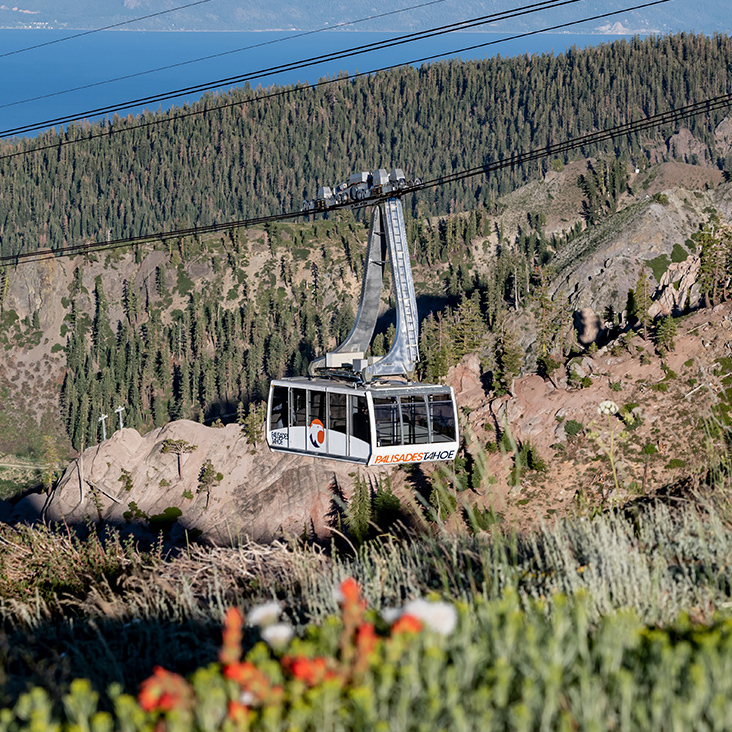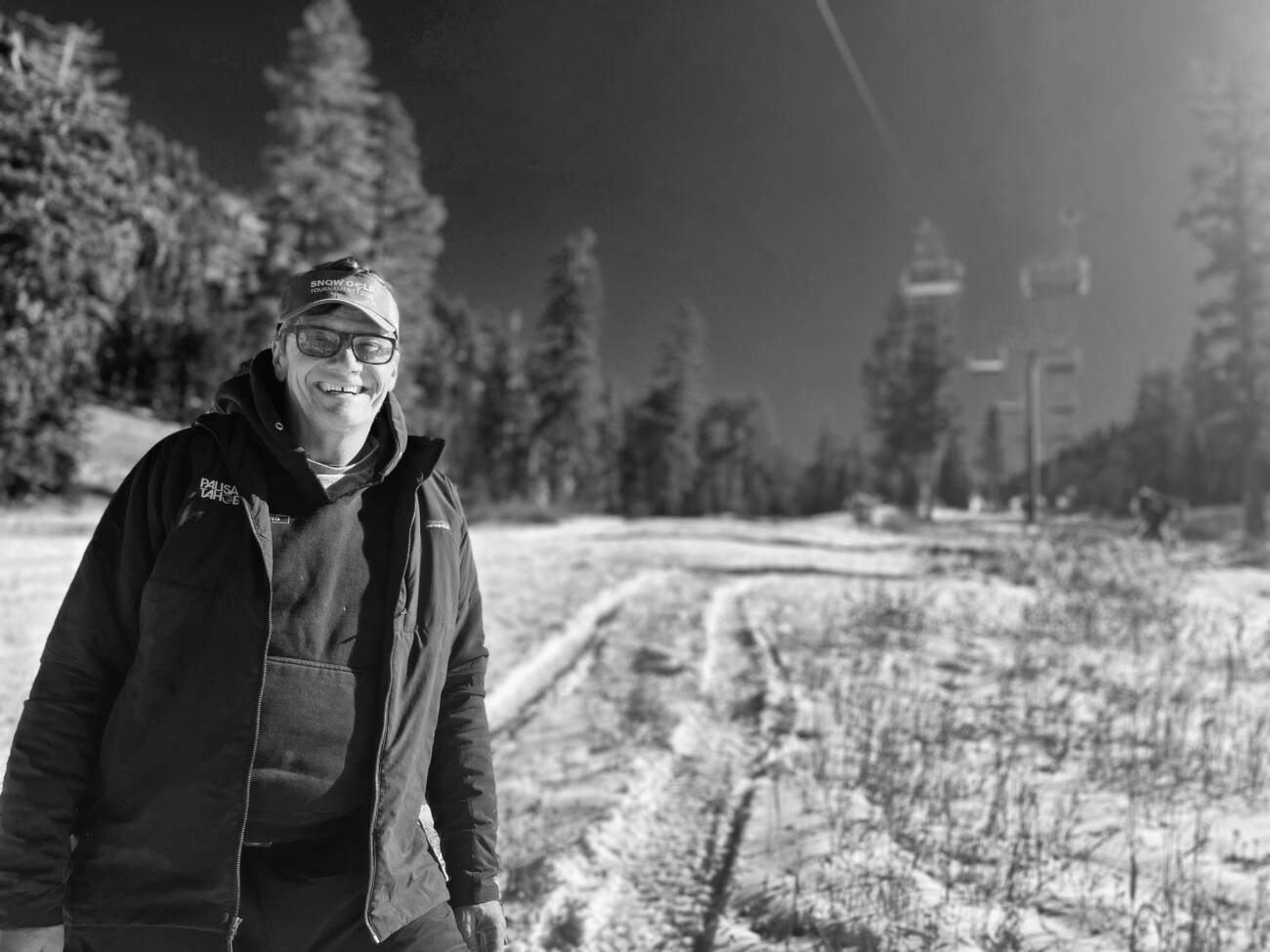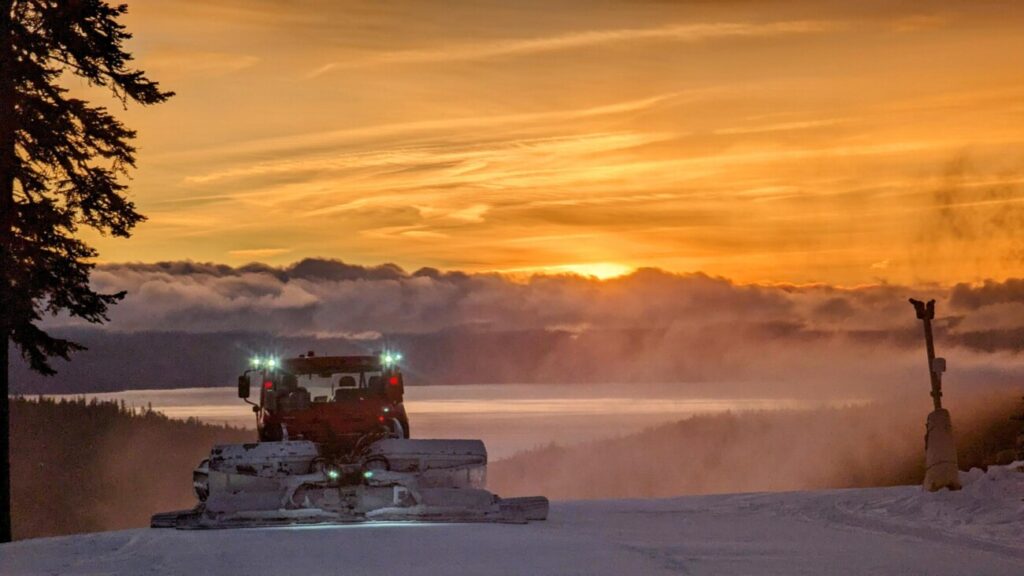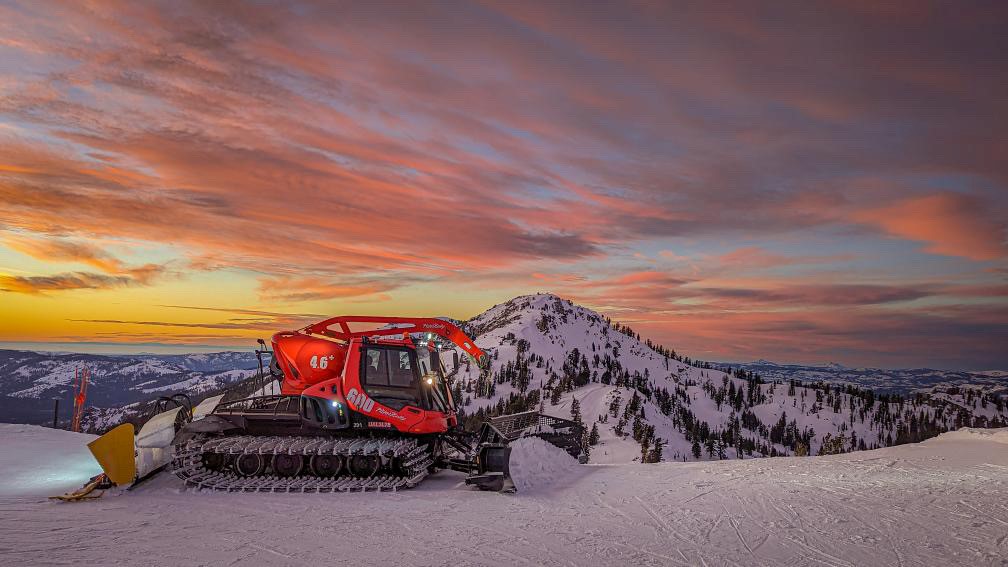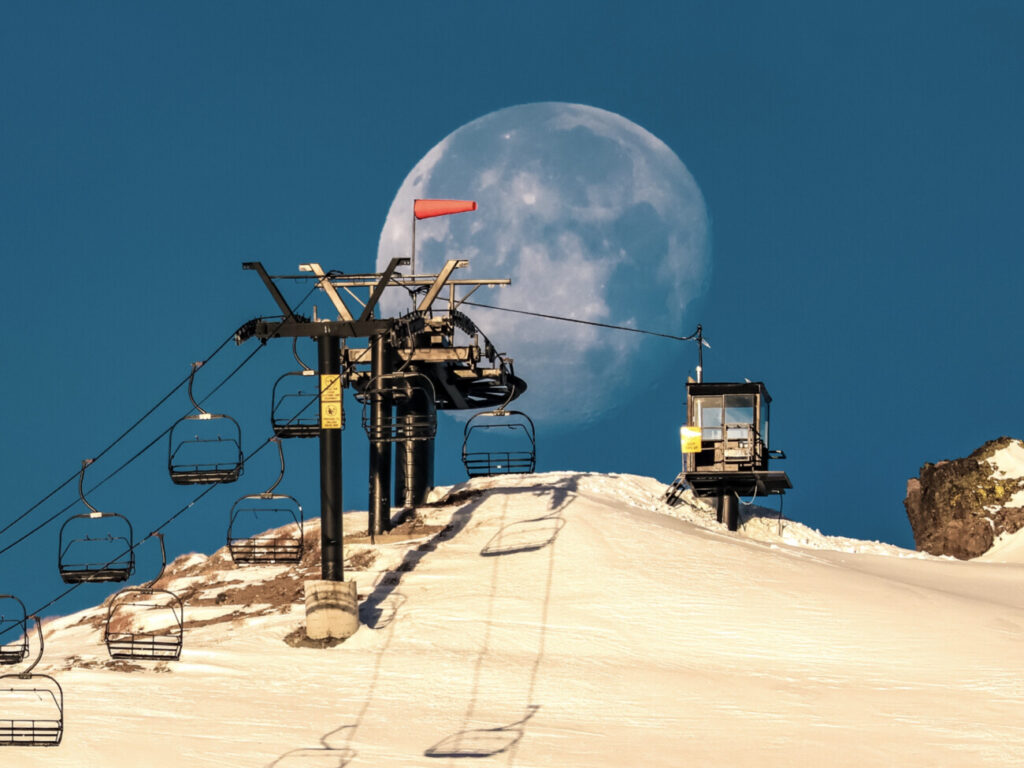Tim Manning, or “Manco” as he’s called by friends and coworkers, has been making snow at Alpine Meadows since 1990.
Tim was born in New Hampshire, the youngest of six children. His parents weren’t skiers, so it was an after-school program that introduced him to the sport. Starting in the sixth grade, the town he lived in would sponsor bus trips to head up to Pat’s Peak for night skiing. This experience was fun and had a lasting impression on Tim; he liked skiing for three hours, getting home at midnight, going to school in the morning, and doing it again the next day. Still, Tim didn’t think he would end up spending his life working in the industry.
In 1989, Tim followed a few friends west to Park City. These friends already had jobs as snowmakers and they encouraged Tim to apply as well. Tim spent a season living in an old trailer in Heber City and working as a snowmaker at Park City. There was a serious snowmaking setup in Park City and Tim learned a lot quickly. He enjoyed this work; it was hard but rewarding.
The following winter, Tim found himself moving in with roommates in Tahoe Donner and taking a job as a snowmaker at Alpine Meadows. A big part of the reason for his move was that, at the time, Lake Tahoe was much more affordable than Park City.
Those early days in the Alpine Meadows snowmaking department were fun. There was a solid crew that returned every season. Hiring new snowmakers and having a large team of workers was never an issue; the housing crisis we face today simply didn’t exist. Someone had to “move away, get a different job, or die” for a new person to get a spot on the crew.

When Tim first started, absolutely everything was manual (today, we have some automation in our systems that can be controlled with a computer). Snowmakers used to use large fan guns with gasoline engines, which could be inconvenient. Those manual systems, however, required less maintenance in the off-season, so in the summer months when Tim wasn’t making snow, he worked as a painter. His painting work has a cool history at Alpine Meadows, too: He has painted (or re-painted) almost every chairlift on the mountain. He was taught to paint chairlifts by Charlie Bidstrup, who was a groomer at Alpine Meadows for over 20 years. Scott Chair was the first chairlift that Tim painted at Alpine.
One of the most defining and terrifying moments of Tim’s life took place on April 19th, 1995 — the same day as the Oklahoma City bombing. Tim was back home in New Hampshire visiting family, working on sanding the upper level of a barn with his girlfriend when an accident occurred: Tim fell two stories through a hay baling door, landing on his back. He had no feeling in the lower part of his body and he knew something was wrong. Thankfully, he was conscious and could yell out to his girlfriend for help. Making this situation even more stressful was that just a few hours earlier, Tim’s girlfriend had told him she was pregnant.
Tim’s neck was broken. At first, Tim wasn’t sure if he would ever use his arms or walk again. He had no feeling for several days. The left side of his body started to come back first. He could move his foot and his hand. There was some relief when this started to happen, but there was anxiety, too. Tim was right-handed — What if the right side didn’t return? Over the next few days, though, full feeling started to be restored. He dealt with hypersensitivity: even the slight wind from someone walking by or moving a blanket led to unbearable pain. His right arm was the last thing to come back.

Recovery took its toll. Tim was in bed for 26 days and lost a significant amount of weight. It was a month before Tim could stand and walk again, with assistance. He had surgery to fuse his neck back together. Following his surgery, he was in a halo neck brace for 117 days. Tim was fortunate that he was able to recover as well as he did. Today, he still has a limited range of motion, but not a day goes by when Tim isn’t grateful to be walking.
Photo: Tim with his parents and nurse on the first day he tried walking again.
Despite this major surgery and learning to walk again, Tim was back making snow at Alpine in November, just seven months after the accident. His son, Gage, was born a few weeks later in December. While Gage was growing up, he got to tag along with his Dad at work. When Tim was working at night, he would set up a bed for Gage in the snowmaking office. Gage would sleep there and Tim would come check on him throughout his shift. In the morning, Tim and Gage would go skiing together. These are some of Tim’s favorite memories.


Throughout his many years as a snowmaker, the nights Tim remembers most are the ones spent outside: busting ass, being cold and miserable, but knowing that you can’t stop. Those extremely cold nights that are way, way below freezing with the system running wide open at 3,000 gallons per minute are rewarding though. Plus, one of the coolest things to witness is how his team members become attuned to the work they are doing. After a few seasons, good snowmakers can learn to dial guns in just by the way they sound.
In 2016, Tim was promoted to Snowmaking Manager. It was his department to inherit. The first year he took over, his team made snow all the way until March. That wasn’t the longest snowmaking season ever, though. In Tim’s second season at Alpine, they made snow until April 1st. The system was brand-new and they wanted to get as much use out of it as possible. These were unforgettable years, but these days, it’s ideal to have snowmaking wrapped up by the new year so that the team can focus on maintenance and repairs.

Today, Tim is a respected leader at Alpine, and he’s also still very hands-on, spending just as much time out in the cold now as he did back in 1990. His team has already started making snow for the season, and they are excited for another winter under his command.

